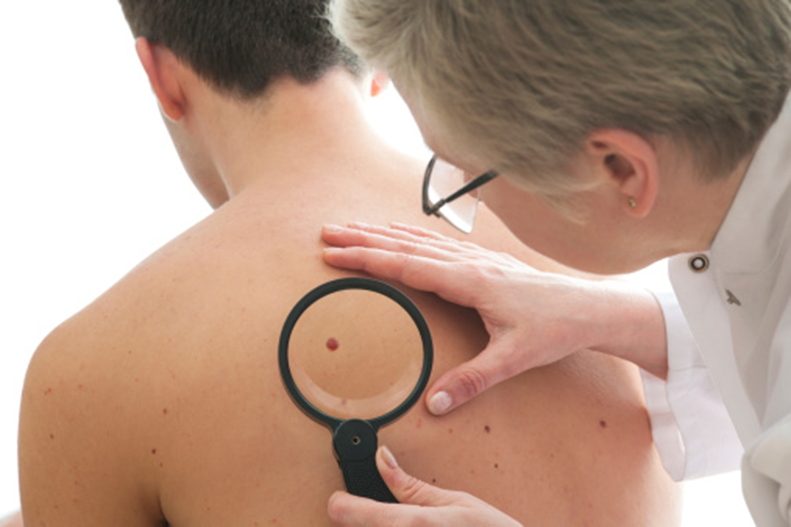This post was last updated on May 2, 2016
Melanoma is a modern epidemic.
The number of reported melanoma cases and deaths have risen steadily in the United States over the past several generations. In fact, an estimated 72,250 new cases of the disease are diagnosed each year in the U.S.
The good news? Treatment is improving for advanced stages of cancer. But early detection is still critical — melanoma is largely treatable in early stages, but much more likely than other skin cancers to spread throughout the body if not detected.
Early-stage melanoma requires much less invasive treatment than later stages of the illness. That’s why the American Academy of Dermatology encourages the public to get tested for skin cancer on the first Monday in May — Melanoma Monday.®
Never Miss a Beat!
Subscribe to Our HealthBeat Newsletter!
Thank you for subscribing!
You can now select the specific newsletters you'd like to receive.
You are already subscribed.
Subscribe to more newsletters in our email preference center.
Sorry, an error occurred. Please try again later.
Get Healthy Tips Sent to Your Phone!
Risk Factors for Melanoma
- Skin color– Those with light-colored eyes and skin are at a higher risk than those with brown eyes and naturally darker skin.
- History of sunburns– This is a theme, particularly when the history of sunburns was during childhood and teenage years.
- Exposure to ultraviolet radiation– Especially recreational sunbathing and tanning bed exposure put the skin at higher risk.
- Moles– An increased number of moles, or the presence of atypical or dysplastic moles, may be a warning sign of higher risk.
- Suppressed immune systems– Certain states of immunosuppression (e.g., what is required to for organ (renal) transplant patients and those with lymphoma (e.g. Hodgkin’s disease) increase vulnerability to melanoma.
- History of melanoma– Personal or family history of melanoma increases your predisposition for developing melanoma.
Melanoma therapy has improved both surgically and medically over the past decade. But early detection and removal is still the best option for preventing death and other serious complications. Early removal reduces melanoma mortality by nearly 50 percent, according to studies.
Even if you don’t have any known risk factors, it’s important to get your skin screened. Here are some quick facts about melanoma screenings:
- Screening is painless and quick. It only takes a few minutes.
- Screening can be done by trained primary care physicians or allied health professionals, as well as by dermatologists and medical or surgical oncologists.
- Screening should be part of annual physical examinations with your physician, as well as a monthly exercise that you do yourself at home.
Is Your Mole Melanoma?
Use our guide to melanoma self-screening to determine if your mole is suspicious. See a dermatologist as soon as possible if you believe your mole could be melanoma.
About UPMC
Headquartered in Pittsburgh, UPMC is a world-renowned health care provider and insurer. We operate 40 hospitals and 800 doctors’ offices and outpatient centers, with locations throughout Pennsylvania, Maryland, New York, West Virginia, and internationally. We employ 4,900 physicians, and we are leaders in clinical care, groundbreaking research, and treatment breakthroughs. U.S. News & World Report consistently ranks UPMC Presbyterian Shadyside as one of the nation’s best hospitals in many specialties and ranks UPMC Children’s Hospital of Pittsburgh on its Honor Roll of America’s Best Children’s Hospitals. We are dedicated to providing Life Changing Medicine to our communities.
